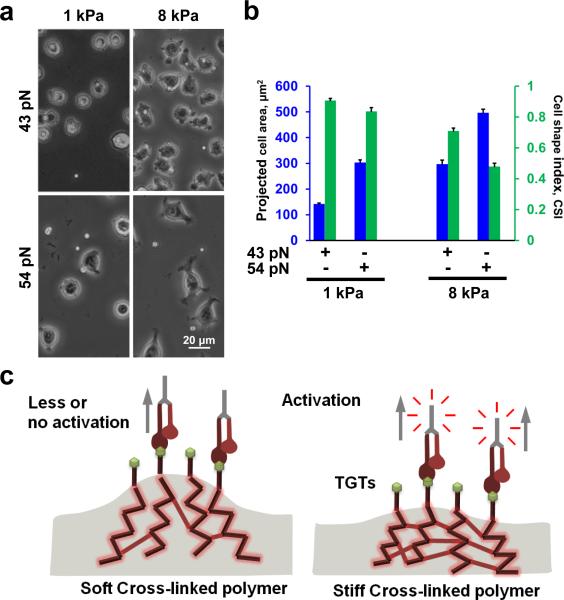Figure 2.
Increasing molecular tension increases cell spreading on same substrate stiffness. (a) Cells were plated on two different substrate stiffness, namely 1 and 8 kPa. For same substrate stiffness, increasing molecular tension tolerance increased degree of cell spreading. (b) Cell spreading significantly increased from 43 pN TGT to 54 pN TGT engineered 1 kPa substrates (n= 35 and 46 for 43 pN and 54 pN respectively; p<9.85×10−20). CSI values also showed significant changes (p<0.01). Similarly significant difference in cell spreading is also observed on 43 pN TGT and 54 pN TGT engineered 8 kPa substrates (n= 41 and 40 for 43 pN and 54 pN respectively; p<2.41×10−14). Pronounced difference in CSI values is observed between 43 pN and 54 pN engineered 8 kPa substrate compared to 1 kPa substrate (p<6.66×10−12). (c) Confounding effects of cross-linked substrates. On softer substrates, the degree of cross-linking is much lower allowing larger substrate deformation compared to rigid substrates where higher degree of cross-linking yields smaller deformation for the same applied forces. Data represent mean± s.e.m.

